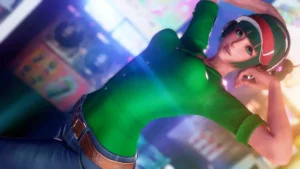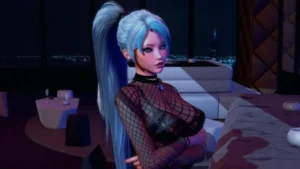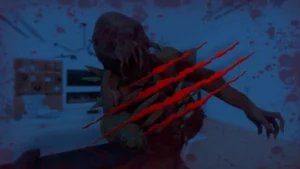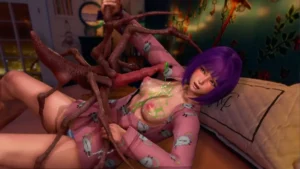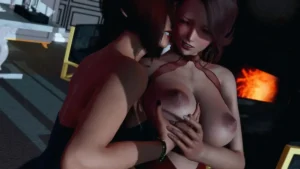
Deviant Anomalies
Play Deviant Anomalies
Deviant Anomalies review
Explore Gameplay, Characters, and Unique Features of Deviant Anomalies
Deviant Anomalies is a unique game that blends narrative depth with engaging character interactions and immersive gameplay. This article dives into the core elements of Deviant Anomalies, exploring its story, characters, and gameplay style. Whether you’re new or looking to deepen your understanding, this guide offers personal insights and practical advice to help you navigate the game’s intriguing world.
Understanding Deviant Anomalies: Story and Characters
What Is Deviant Anomalies About? 🕵️♂️🔍
Let me tell you about the first time I booted up Deviant Anomalies. I was expecting a straightforward detective game—find clues, solve a case, call it a day. Boy, was I wrong. The Deviant Anomalies story starts with a simple premise: you’re a private investigator taking on a missing person’s case in a rain-slicked, neo-noir city. But within hours, you realize nothing is as it seems. The initial mystery is just the tip of a terrifying iceberg, a gateway into a reality where the very fabric of our world is thin and fragile.
The Deviant Anomalies plot masterfully evolves from a grounded detective story into a full-blown psychological descent. You begin by tracking a missing university student, but each clue you uncover—a strange symbol scrawled on a wall, a witness account that makes no logical sense, a photograph that seems to change—peels back another layer of a much larger, more horrifying truth. I remember the exact moment my investigation shifted; I found a journal entry that described geometries that “should not exist,” and a chill went down my spine. The game stops being about finding someone and starts being about surviving the revelation of what you’ve found.
This is where the Lovecraftian themes in Deviant Anomalies truly sink their hooks into you. It’s not about tentacled monsters jumping out of closets. It’s a slow, creeping dread—the terrifying realization that human beings are insignificant specks in a cosmos filled with ancient, indifferent beings. The game’s horror comes from the erosion of sanity, from witnessing things the human mind cannot process. The Deviant Anomalies narrative is a masterclass in atmospheric storytelling, making you feel the protagonist’s growing paranoia and desperation as the ordinary world crumbles around them.
Key Characters and Their Roles 👥✨
What makes the Deviant Anomalies story so compelling isn’t just the cosmic horror—it’s the deeply human characters caught in the middle of it. The Deviant Anomalies characters are flawed, complex, and heartbreakingly real. Your interactions with them form the emotional core of the experience, and their fates will stay with you long after you’ve finished playing.
The protagonist is your avatar into this world, and their voice is perfectly pitched—cynical and world-weary, but with a vulnerability that makes them relatable. As you dig deeper into the mystery, you’ll meet a small but incredibly well-written cast who are all connected to the central enigma.
Here’s a quick look at the key people you’ll encounter on your descent:
| Character | Role & Description |
|---|---|
| Dr. Aris Thorne | A reclusive astrophysicist whose research into cosmic patterns triggered the central events. He’s a tragic figure, a man who looked too deep into the abyss and is now desperately trying to warn others. |
| Elara Vance | The missing student you’re hired to find. She’s fiercely intelligent and rebellious, but her curiosity led her to uncover truths that made her a target. She’s not just a damsel in distress; she’s a catalyst. |
| Detective Miles | A cynical, by-the-book police contact who initially dismisses your theories. His arc from skeptic to terrified believer is one of the most gripping parts of the Deviant Anomalies narrative. |
| The Architect | An enigmatic, almost ghostly figure who seems to be orchestrating events from the shadows. Is he a cult leader, a madman, or something far less human? His motives are the game’s biggest mystery. |
My personal connection was strongest with Dr. Thorne. There’s a late-game conversation with him where he breaks down, confessing that he can no longer distinguish his dreams from reality. The raw fear in his voice isn’t acted; it’s felt. This is the strength of the Deviant Anomalies characters—they aren’t just vehicles for plot points. They are emotional anchors in a sea of chaos. Your choices in dialogue directly impact your relationships with them, influencing who trusts you, who helps you, and ultimately, who survives the impending unraveling of reality.
Narrative Style and Emotional Depth 💔🎭
The Deviant Anomalies narrative is what truly sets this game apart. It’s a carefully woven tapestry where every thread matters. The game employs an environmental storytelling technique that is just brilliant. You’ll piece together the Deviant Anomalies plot not just through cutscenes and dialogue, but through the notes left on a desk, the frantic scribbles in a margin, the eerie silence of a room that feels watched. I spent minutes just examining the details in Thorne’s study, and the story those objects told was more chilling than any jump scare.
This is supported by a Deviant Anomalies narrative structure that gives you genuine agency. You aren’t just along for the ride. The choices you make—how you interrogate a witness, whether you share a crucial piece of evidence, which lead you pursue first—have tangible consequences. I replayed a section three times because I was so devastated by the outcome of a choice I made regarding Elara. It made me realize my actions weren’t just changing the story; they were defining my character’s morality in the face of the incomprehensible.
This leads directly to the game’s incredible Deviant Anomalies emotional depth. The horror isn’t just in the cosmic scale of the threat; it’s in the intimate, human cost. The Deviant Anomalies character development is a journey of breaking points. You watch strong people shatter, see relationships fray under unimaginable stress, and confront your own character’s fears and regrets. There’s a sequence where you’re trapped in a looping memory, forced to relive your greatest failure. It’s a brutal, emotionally draining experience that adds profound weight to your mission.
The true horror of Deviant Anomalies isn’t the monster you can’t comprehend; it’s the part of yourself you are forced to confront in the process.
The Deviant Anomalies emotional depth is the glue that binds everything together. The Lovecraftian themes in Deviant Anomalies would feel distant and cold without it. Instead, they become deeply personal. The fear of cosmic insignificance is mirrored by the characters’ fears of being forgotten, of failing those they love, of losing their very minds. This blend of intimate human drama and existential dread is the game’s crowning achievement. It’s a story that doesn’t just want to scare you; it wants to make you feel, and in that, it succeeds magnificently. The Deviant Anomalies story is one you don’t just play—you endure it, you survive it, and you’ll absolutely remember it.
Deviant Anomalies offers a compelling mix of storytelling and character interaction that sets it apart. Its evolving narrative, combined with detailed character design and immersive gameplay, creates a memorable experience. Whether you enjoy exploring complex characters or engaging with a unique plot, this game delivers on multiple levels. Dive in and discover the layers that make Deviant Anomalies a standout title.

